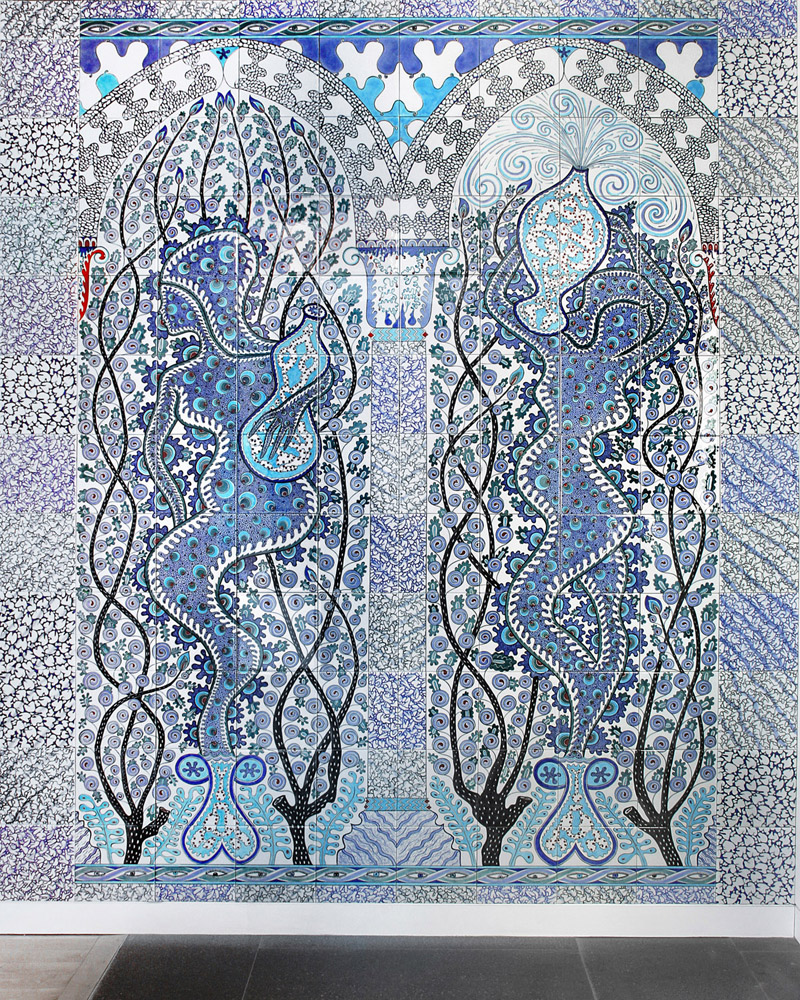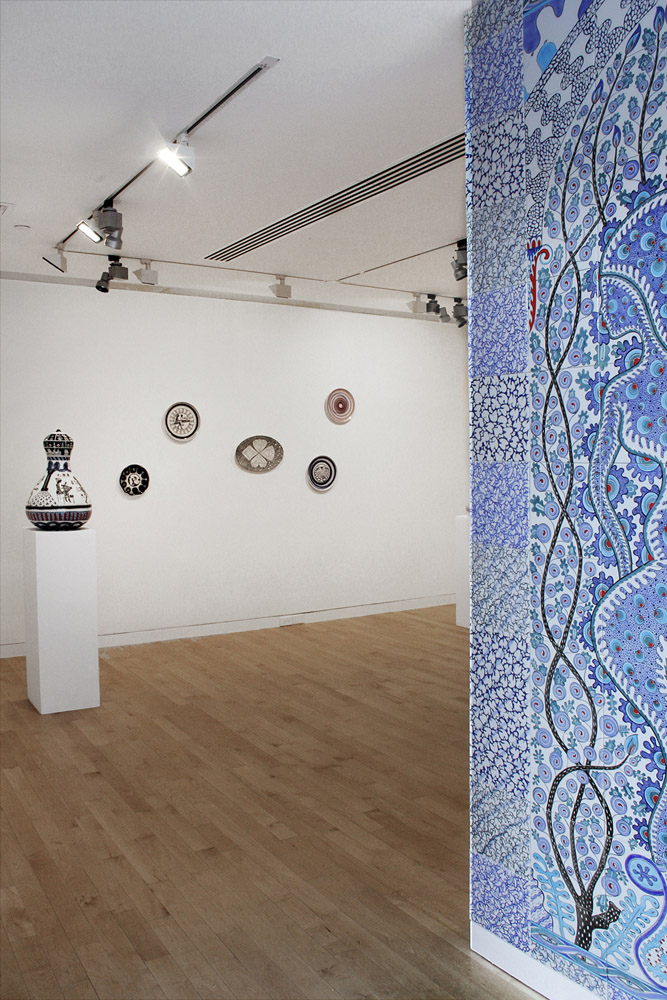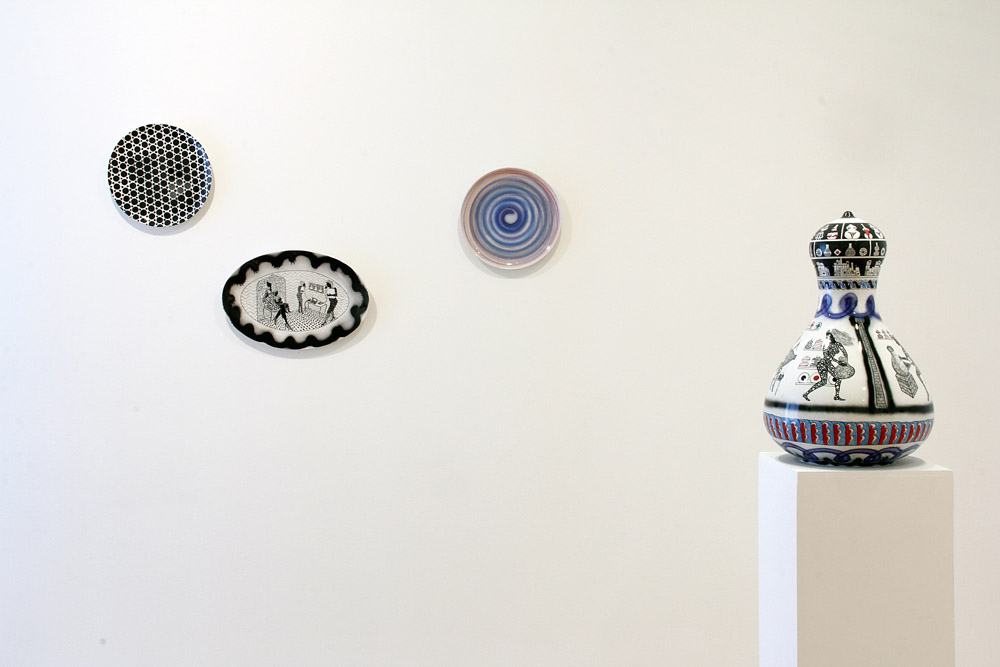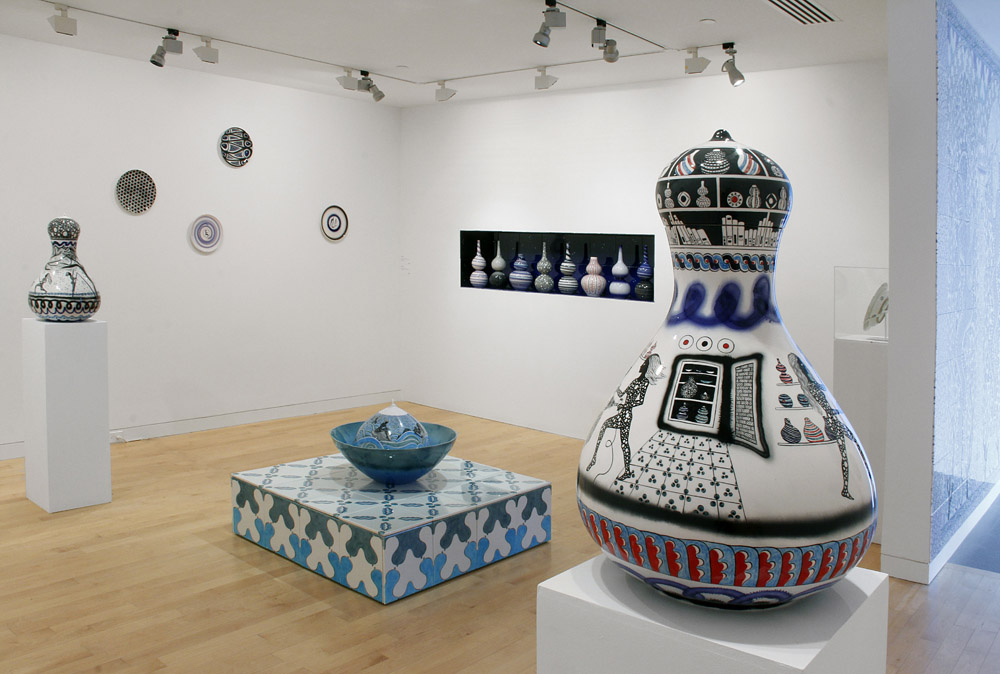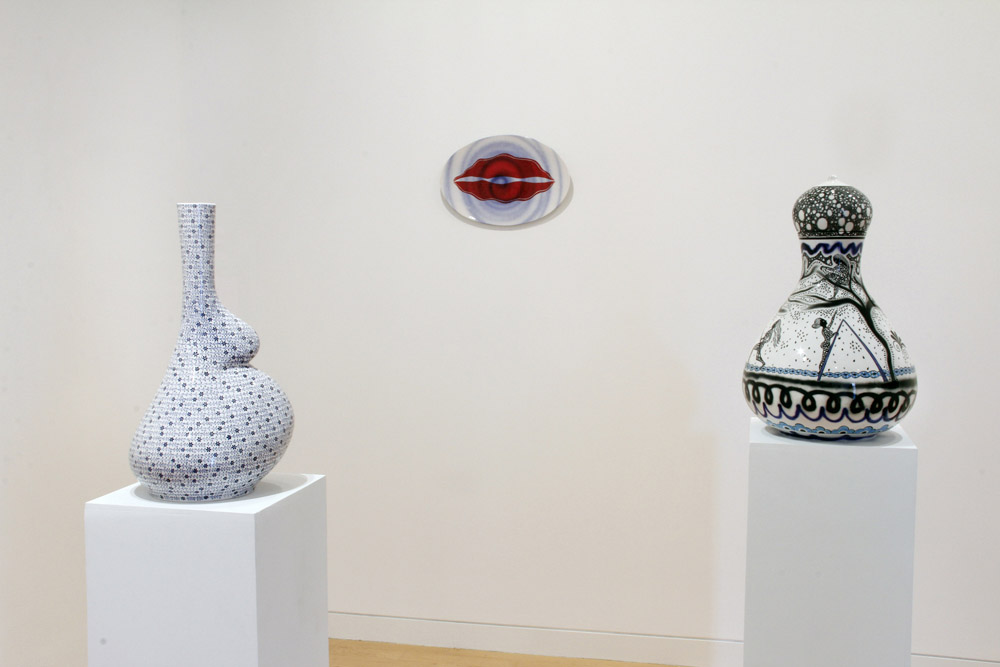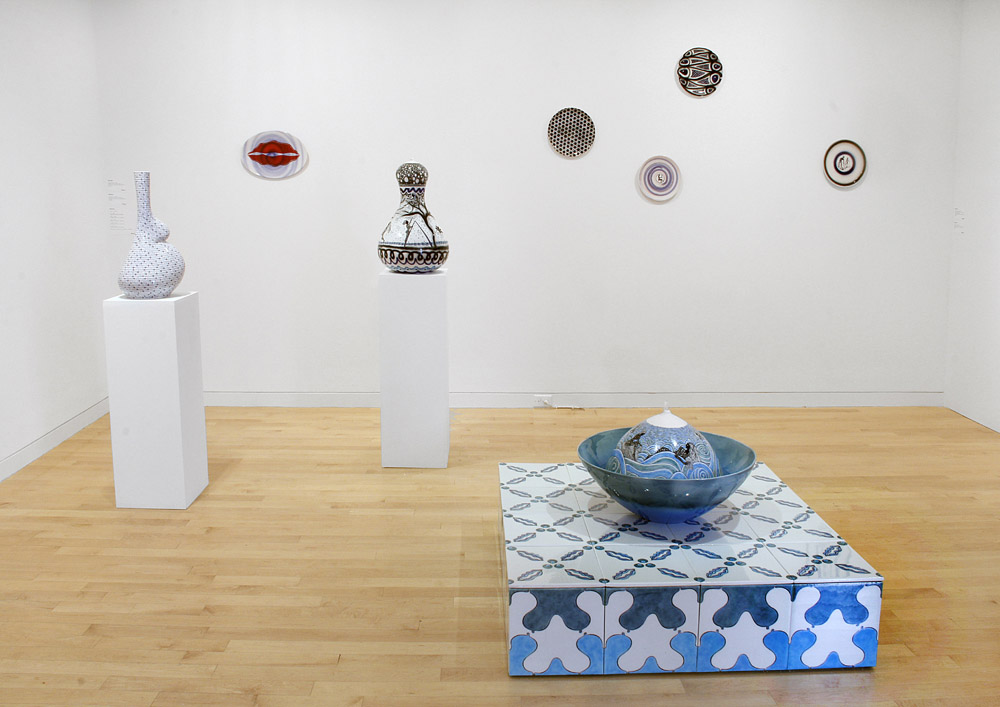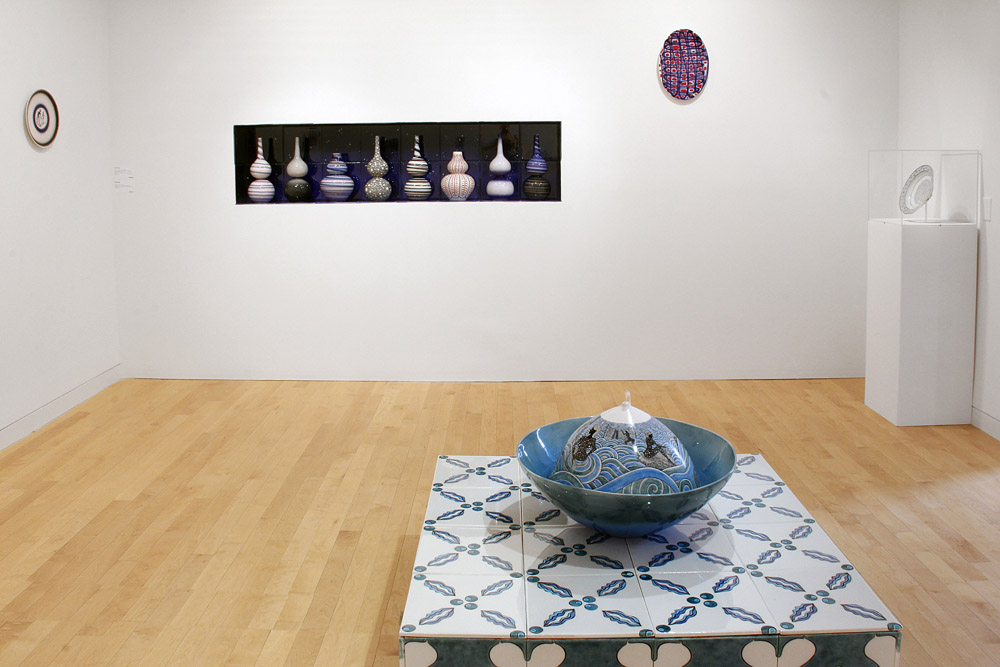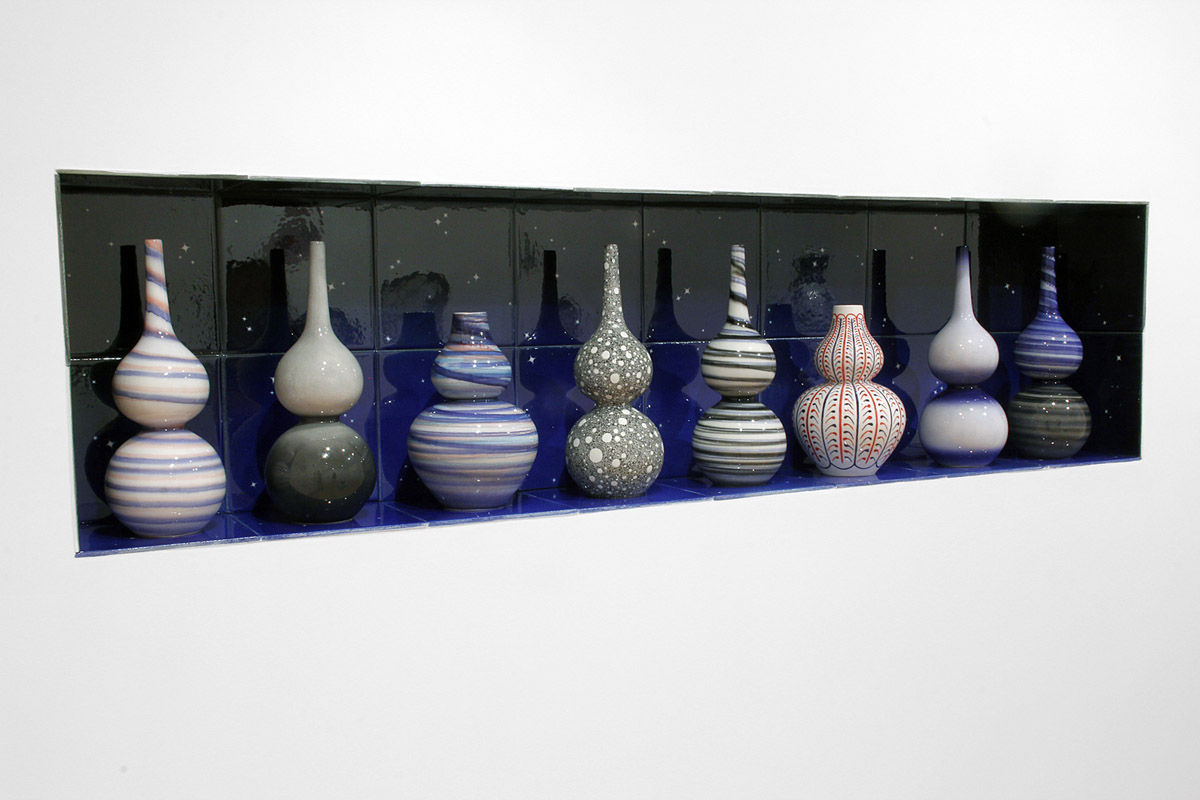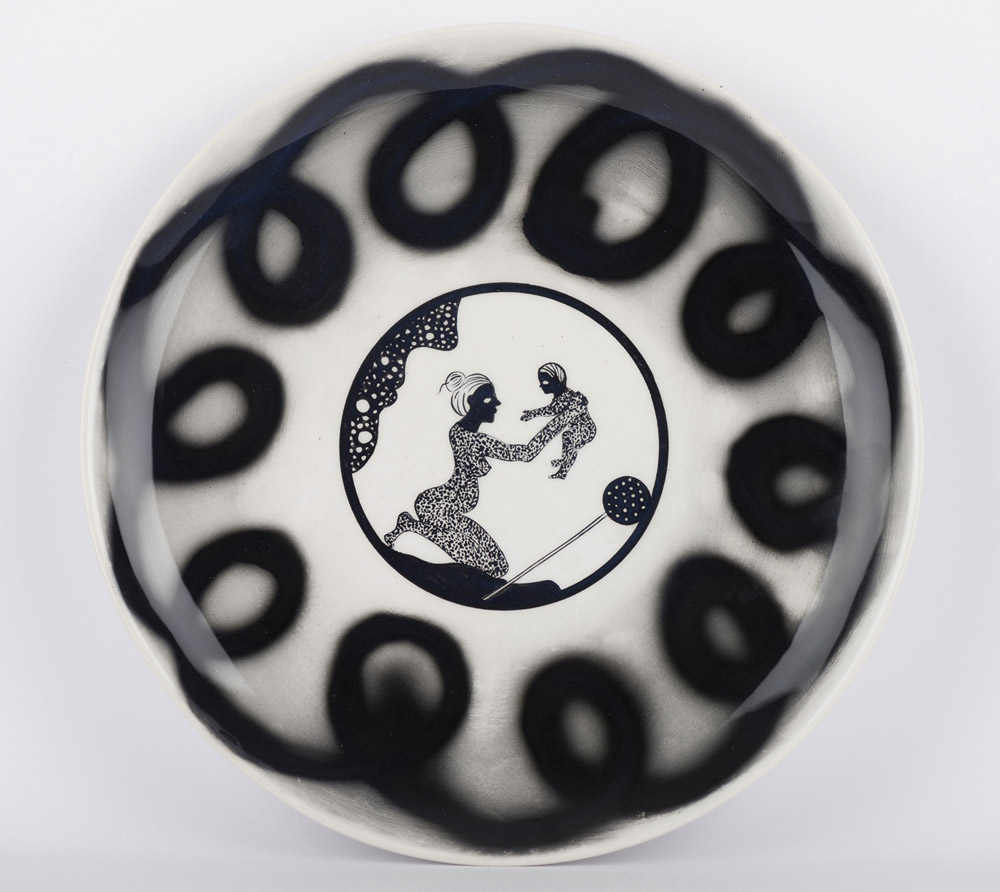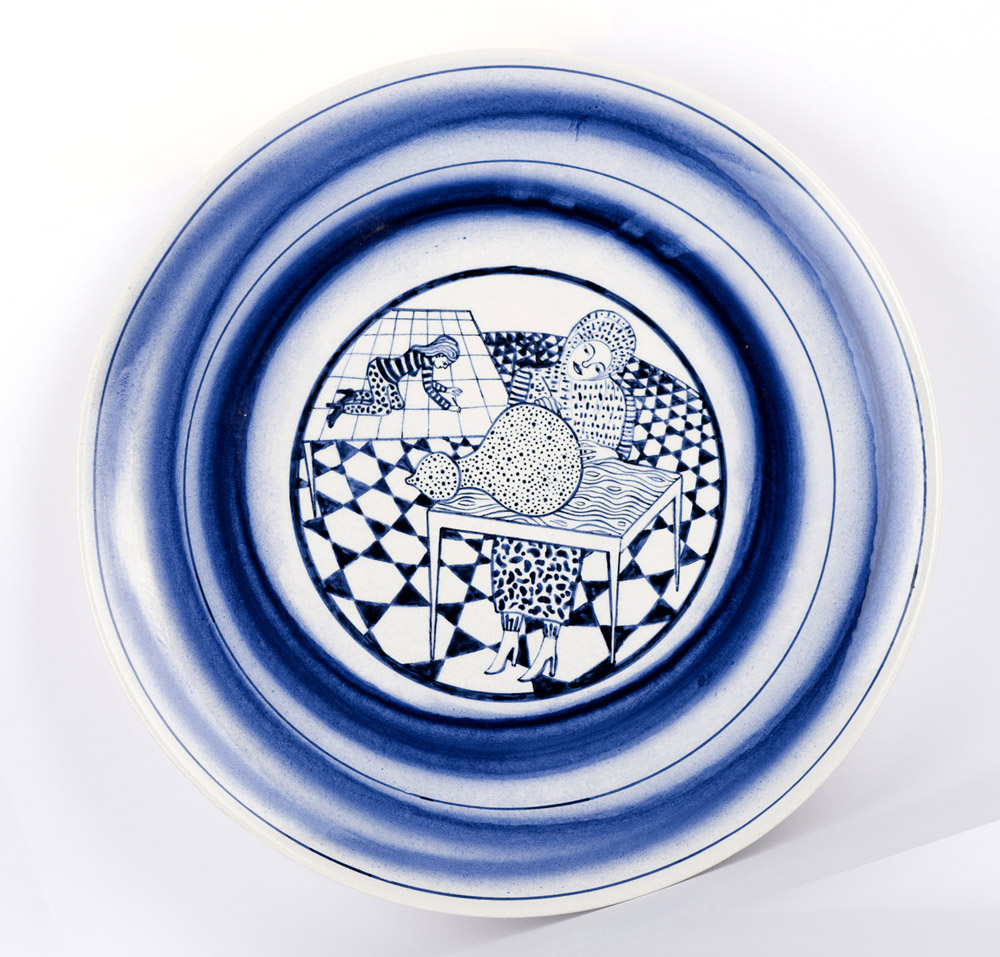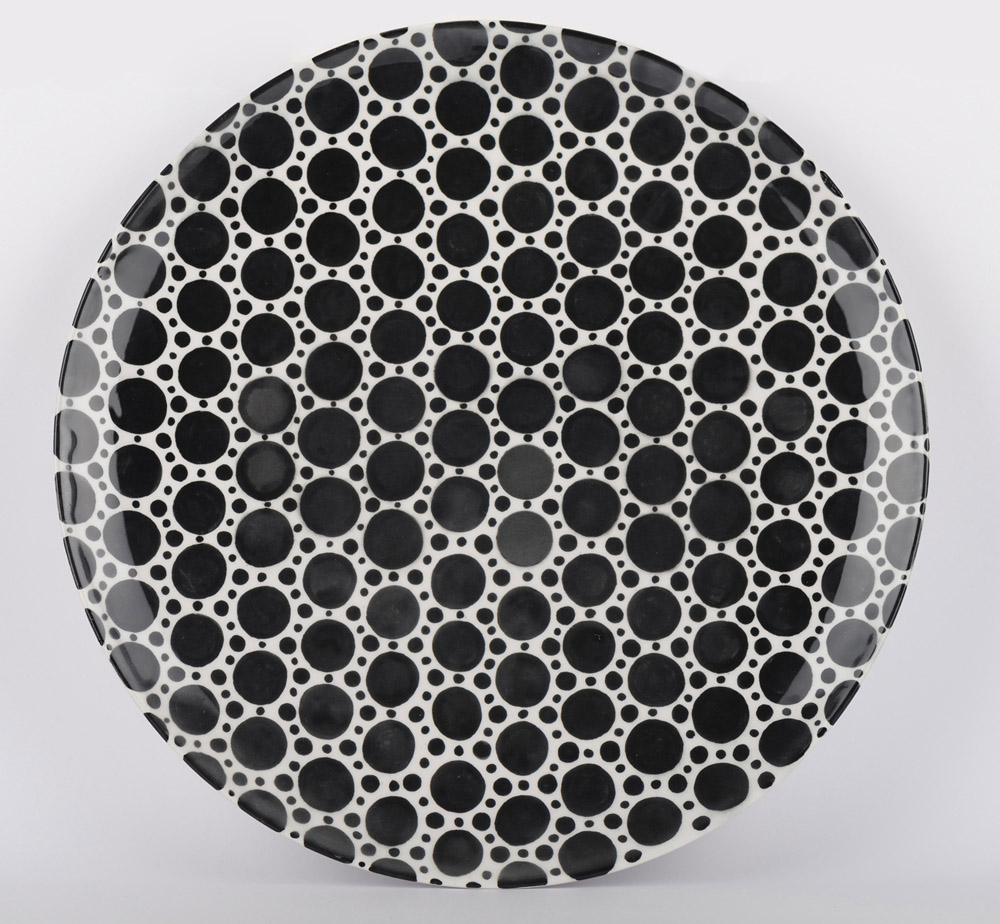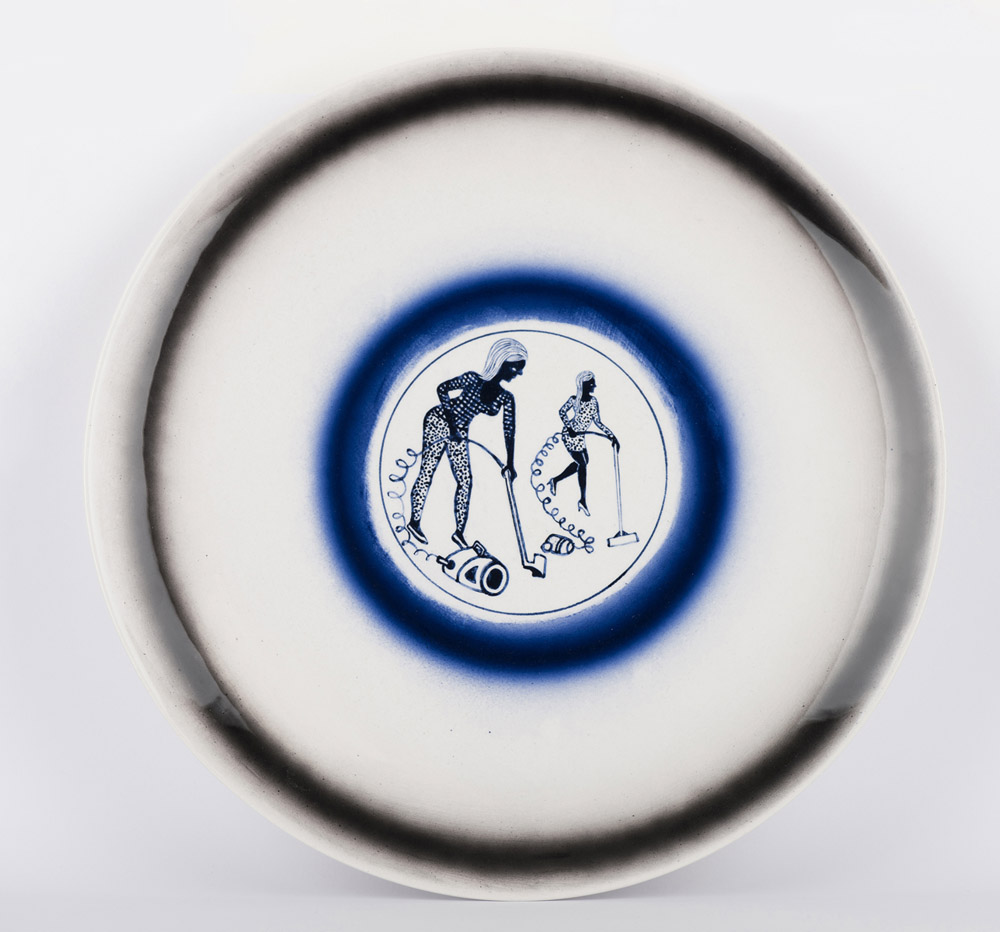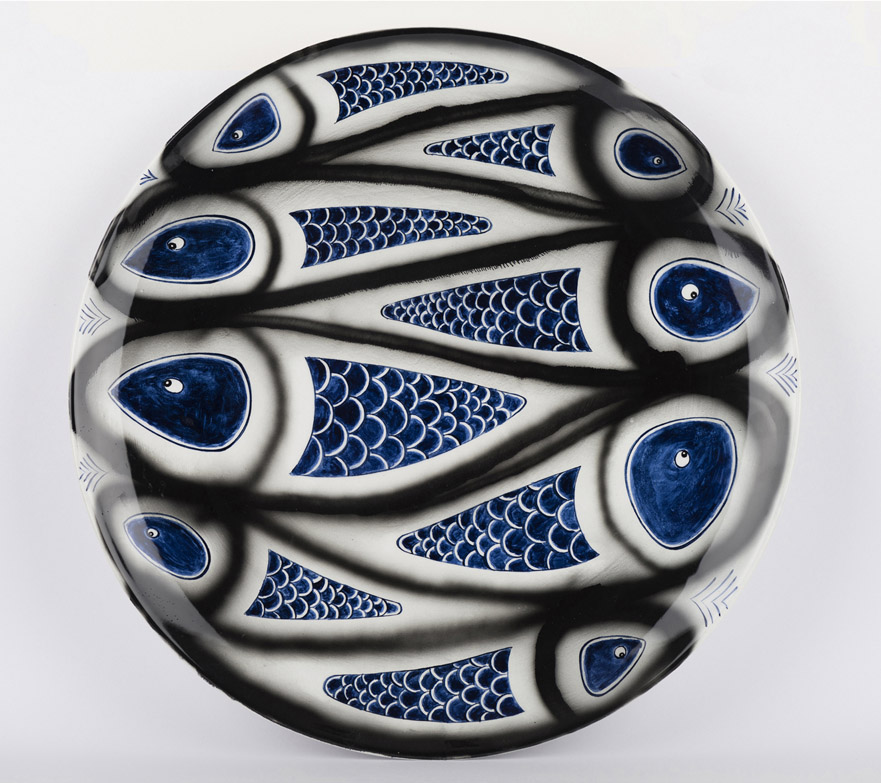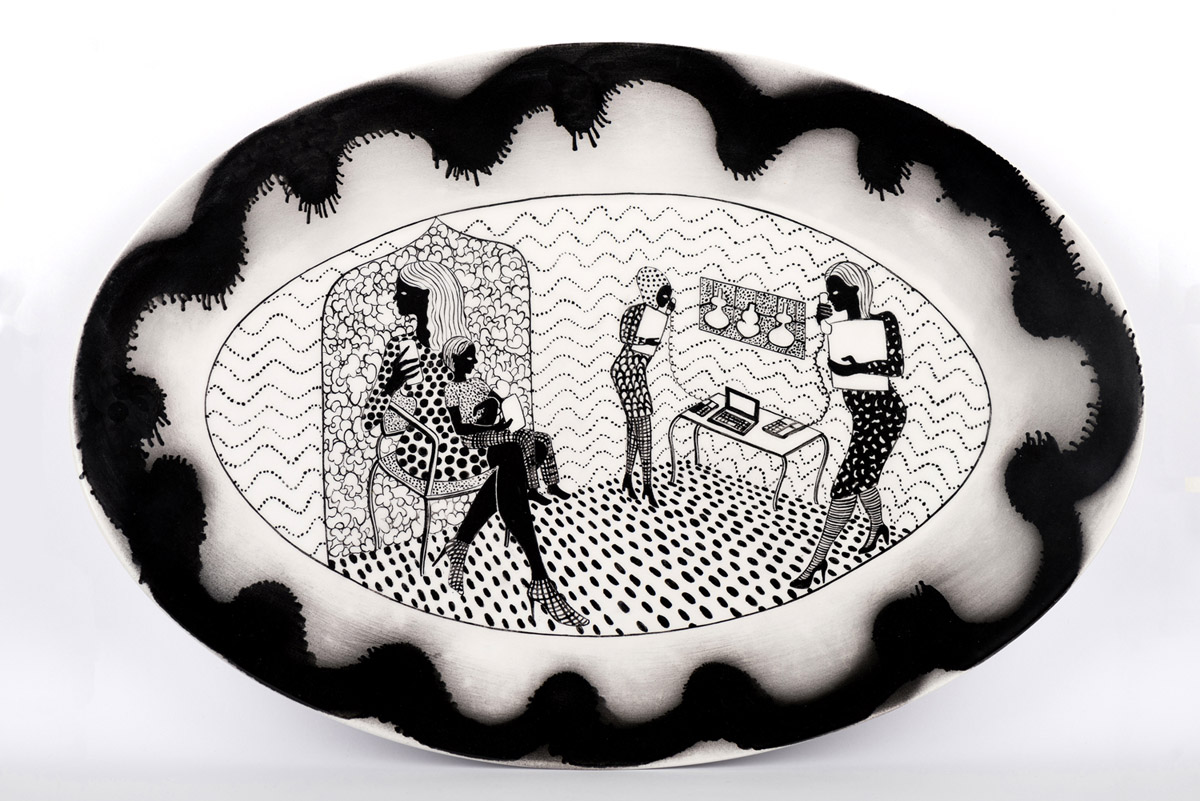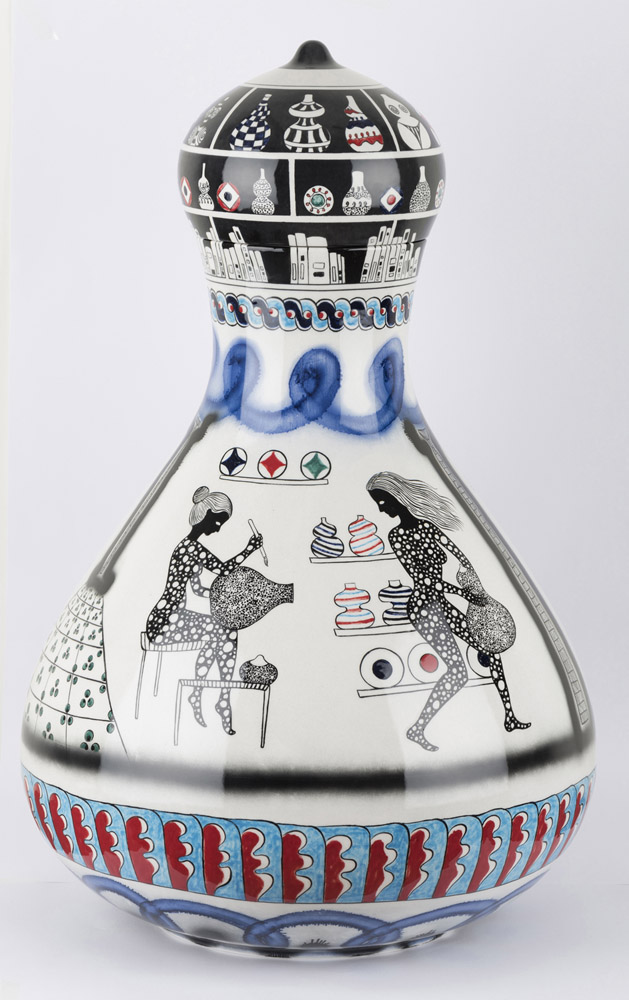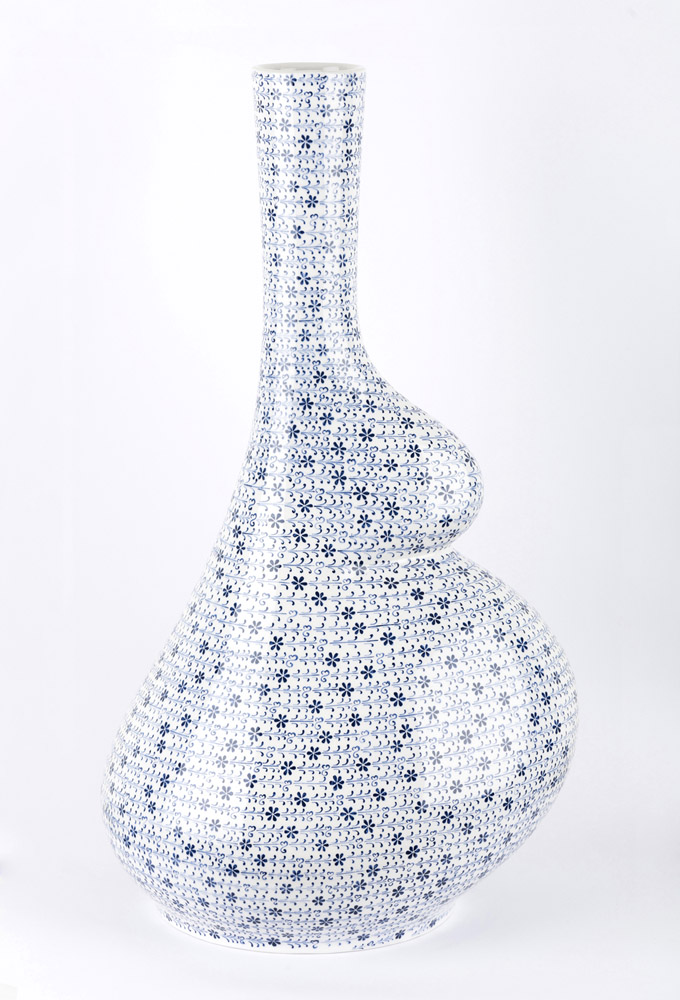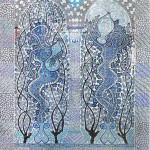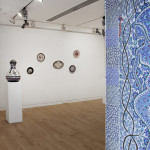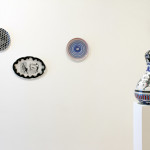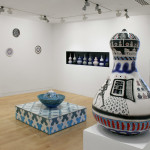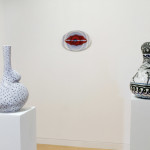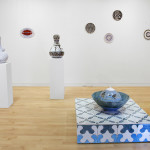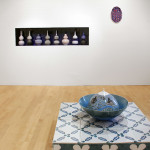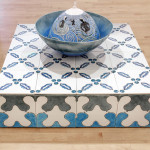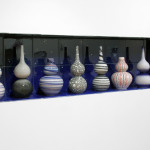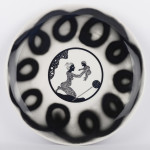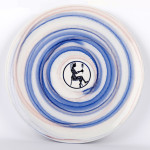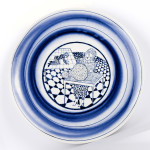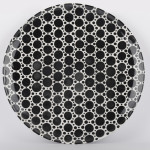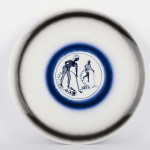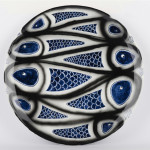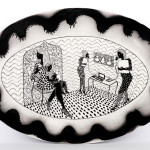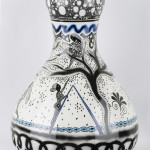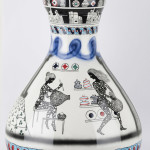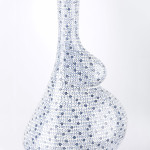- Naiads, 2015, tile mural, underglaze painted stonepaste, 275 x 235 cm
- Nicaea, 2015, installation view
- Nicaea, 2015, installation view
- Nicaea, 2015, installation view
- Nicaea, 2015, installation view
- Nicaea, 2015, installation view
- Nicaea, 2015, installation view
- Lake Nicaea, 2015, ceramic fountain in two parts, underglaze painted stonepaste, pump, water, 120 x 120 x 30 cm
- Starry Niche, 2015, tiled niche with ceramic vases, underglaze painted stonepaste, 200 x 50 x 25 cm
- Mother and Child, 2014, underglaze painted stonepaste, 29 x 3 cm
- Mirror, 2014, underglaze painted stonepaste, 31.5 x 3 cm
- Dekor, 2015, underglaze painted stonepaste, 31.5 x 3 cm
- Polke 2, 2014, underglaze painted stonepaste, 31.5 x 3 cm
- Vacuum, 2015, underglaze painted stonepaste, 31.5 x 3 cm
- Fishdish, 2015, underglaze painted stonepaste, 31.5 x 3 cm
- Front Office, 2015, underglaze painted stonepaste, 46 x 31 x 3.5 cm
- Olivepickers, 2014, underglaze painted stonepaste, 75 x 40 cm
- Potterymakers, 2014, underglaze painted stonepaste, 75 x 40 cm
- Pregnant Haliç II, 2015, underglaze painted stonepaste, 60 x 32 cm
The Aldrich Contemporary Art Museum presents a site-specific installation of recent ceramic works by Elif Uras, titled Nicaea. This exhibition, on view from May 3 to October 25, 2015, transforms a gallery into an interior courtyard featuring domestic objects and architectural motifs, including a ceramic fountain, a tiled niche, and a large-scale tile mural.Uras produces her ceramic works onsite in Iznik, Turkey (originally Nicaea, named after a nymph in Greek mythology), celebrated for its tile and ceramic production during the Ottoman Empire. Her imagery merges traditional nonfigurative Turkish art with Western art historical references, while highlighting shifting notions of gender and class within the context of the struggle between modernity and tradition. Historically, Iznik reflected the patriarchy of the traditional society, with male artists and craftspeople producing work that adorned the walls of spaces mostly limited to men, such as their segregated quarters in mosques and baths. In Iznik today, women are very dominant in both the management and labor of ceramic production. In response, Uras’s sensous vessels reflect this transformation of gender roles by placing the female figure center stage. Whether depicting women farming olives and making pottery, or alluding to the pregnant body, Uras’s vessels and plates populate the gallery with distinctly feminine forms and imagery. A functioning ceramic fountain sits in the center of the gallery, atop a carpet-like grid of painted tiles. Water and its constant flow, popular symbols of fertility and prosperity, reinforce the exhibition’s primordial focus. In a tiled wall niche, smaller vases are grouped on a long shelf, a nod to their inherent domesticity. On the outside wall, a painted tile mural inspired by a historic Iznik panel from the Topkapı Museum presents central figures that resemble Art Nouveau water nymphs. Alongside Uras’s own work, the exhibition presents an original Iznik plate dating from the first half of the sixteenth century, on loan from the collection of The Metropolitan Museum of Art. The Iznik plate is positioned in dialogue with Uras’s plates and vessels, some of which incorporate its intricate spiral motif.
- Naiads, 2015, tile mural, underglaze painted stonepaste, 275 x 235 cm
- Nicaea, 2015, installation view
- Nicaea, 2015, installation view
- Nicaea, 2015, installation view
- Nicaea, 2015, installation view
- Nicaea, 2015, installation view
- Nicaea, 2015, installation view
- Lake Nicaea, 2015, ceramic fountain in two parts, underglaze painted stonepaste, pump, water, 120 x 120 x 30 cm
- Starry Niche, 2015, tiled niche with ceramic vases, underglaze painted stonepaste, 200 x 50 x 25 cm
- Mother and Child, 2014, underglaze painted stonepaste, 29 x 3 cm
- Mirror, 2014, underglaze painted stonepaste, 31.5 x 3 cm
- Dekor, 2015, underglaze painted stonepaste, 31.5 x 3 cm
- Polke 2, 2014, underglaze painted stonepaste, 31.5 x 3 cm
- Vacuum, 2015, underglaze painted stonepaste, 31.5 x 3 cm
- Fishdish, 2015, underglaze painted stonepaste, 31.5 x 3 cm
- Front Office, 2015, underglaze painted stonepaste, 46 x 31 x 3.5 cm
- Olivepickers, 2014, underglaze painted stonepaste, 75 x 40 cm
- Potterymakers, 2014, underglaze painted stonepaste, 75 x 40 cm
- Pregnant Haliç II, 2015, underglaze painted stonepaste, 60 x 32 cm
The Aldrich Contemporary Art Museum presents a site-specific installation of recent ceramic works by Elif Uras, titled Nicaea. This exhibition, on view from May 3 to October 25, 2015, transforms a gallery into an interior courtyard featuring domestic objects and architectural motifs, including a ceramic fountain, a tiled niche, and a large-scale tile mural.Uras produces her ceramic works onsite in Iznik, Turkey (originally Nicaea, named after a nymph in Greek mythology), celebrated for its tile and ceramic production during the Ottoman Empire. Her imagery merges traditional nonfigurative Turkish art with Western art historical references, while highlighting shifting notions of gender and class within the context of the struggle between modernity and tradition. Historically, Iznik reflected the patriarchy of the traditional society, with male artists and craftspeople producing work that adorned the walls of spaces mostly limited to men, such as their segregated quarters in mosques and baths. In Iznik today, women are very dominant in both the management and labor of ceramic production. In response, Uras’s sensous vessels reflect this transformation of gender roles by placing the female figure center stage. Whether depicting women farming olives and making pottery, or alluding to the pregnant body, Uras’s vessels and plates populate the gallery with distinctly feminine forms and imagery. A functioning ceramic fountain sits in the center of the gallery, atop a carpet-like grid of painted tiles. Water and its constant flow, popular symbols of fertility and prosperity, reinforce the exhibition’s primordial focus. In a tiled wall niche, smaller vases are grouped on a long shelf, a nod to their inherent domesticity. On the outside wall, a painted tile mural inspired by a historic Iznik panel from the Topkapı Museum presents central figures that resemble Art Nouveau water nymphs. Alongside Uras’s own work, the exhibition presents an original Iznik plate dating from the first half of the sixteenth century, on loan from the collection of The Metropolitan Museum of Art. The Iznik plate is positioned in dialogue with Uras’s plates and vessels, some of which incorporate its intricate spiral motif.

Naiads, 2015, tile mural, underglaze painted stonepaste, 275 x 235 cm

Nicaea, 2015, installation view

Nicaea, 2015, installation view

Nicaea, 2015, installation view

Nicaea, 2015, installation view

Nicaea, 2015, installation view

Nicaea, 2015, installation view

Lake Nicaea, 2015, ceramic fountain in two parts, underglaze painted stonepaste, pump, water, 120 x 120 x 30 cm

Starry Niche, 2015, tiled niche with ceramic vases, underglaze painted stonepaste, 200 x 50 x 25 cm

Mother and Child, 2014, underglaze painted stonepaste, 29 x 3 cm

Mirror, 2014, underglaze painted stonepaste, 31.5 x 3 cm

Dekor, 2015, underglaze painted stonepaste, 31.5 x 3 cm

Polke 2, 2014, underglaze painted stonepaste, 31.5 x 3 cm

Vacuum, 2015, underglaze painted stonepaste, 31.5 x 3 cm

Fishdish, 2015, underglaze painted stonepaste, 31.5 x 3 cm

Front Office, 2015, underglaze painted stonepaste, 46 x 31 x 3.5 cm

Olivepickers, 2014, underglaze painted stonepaste, 75 x 40 cm

Potterymakers, 2014, underglaze painted stonepaste, 75 x 40 cm


